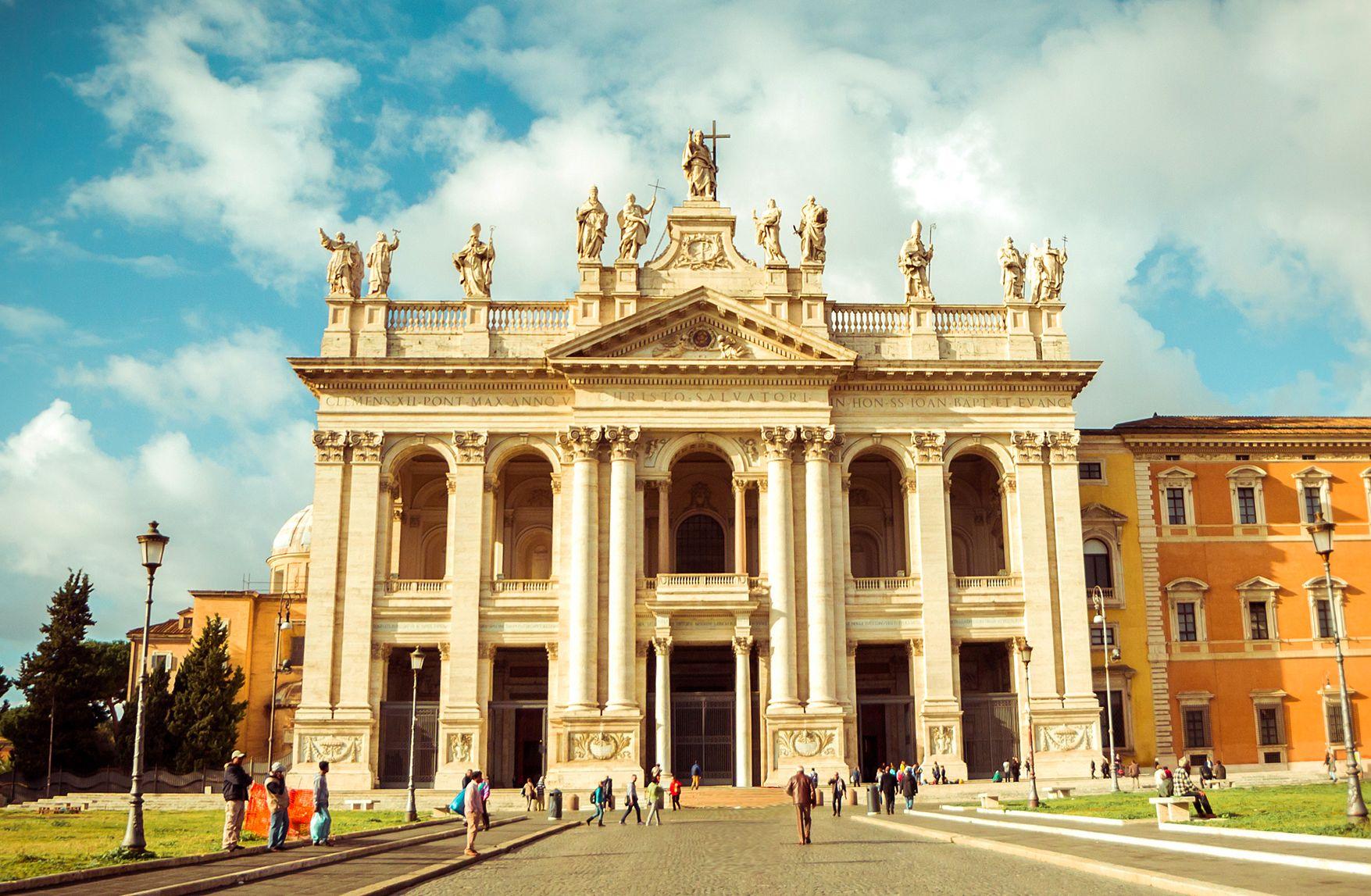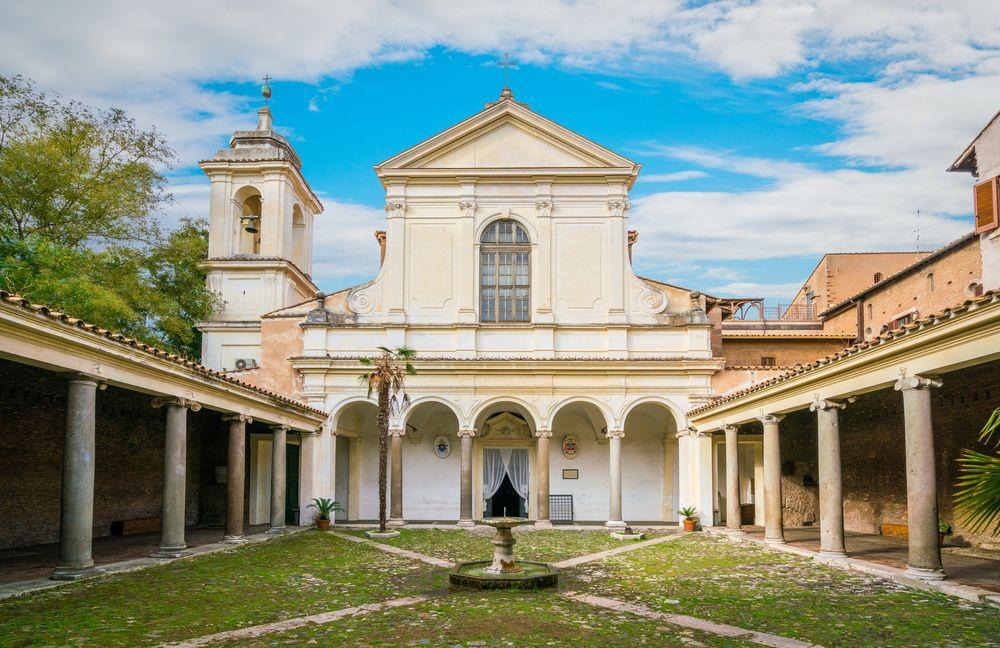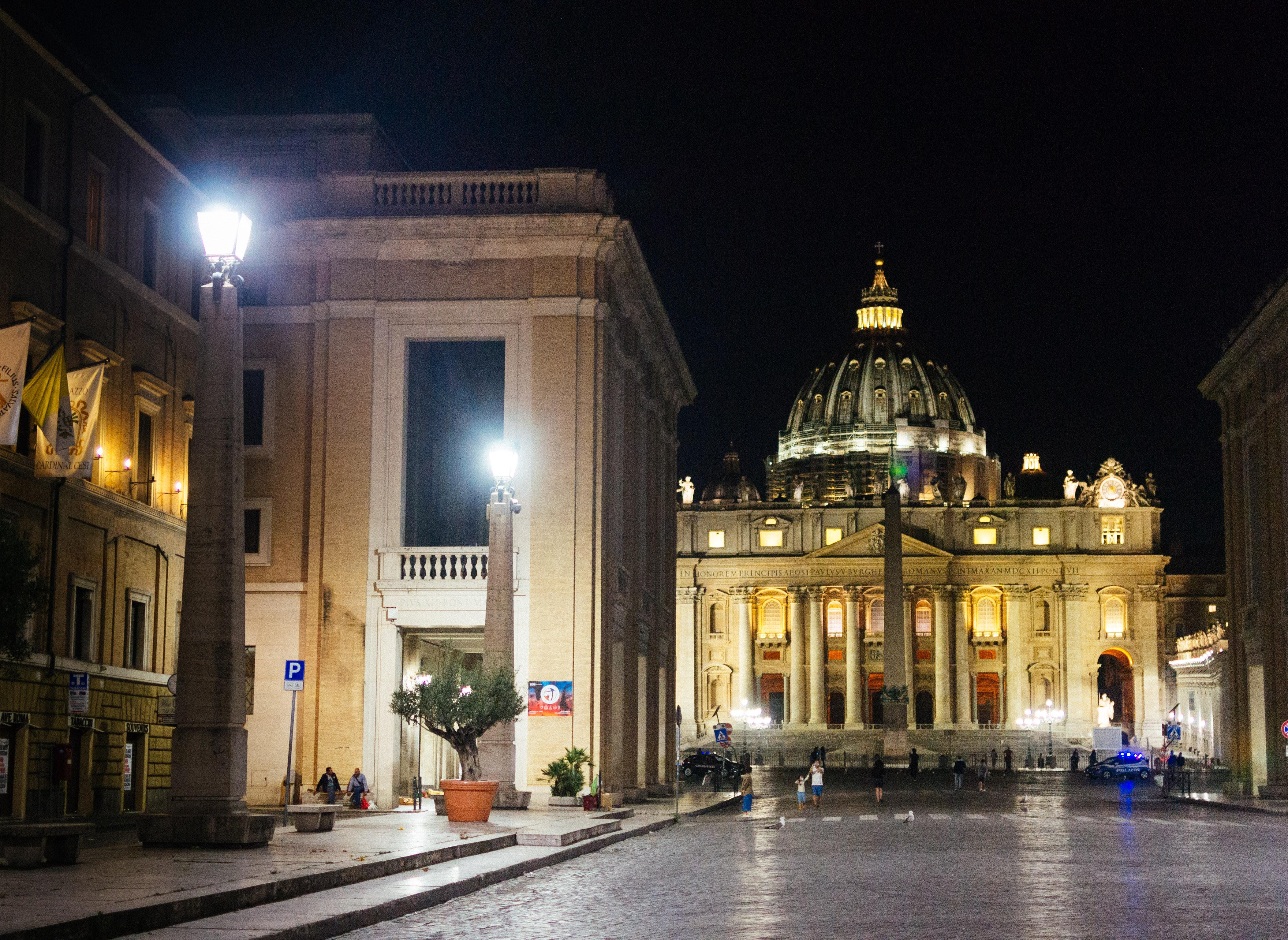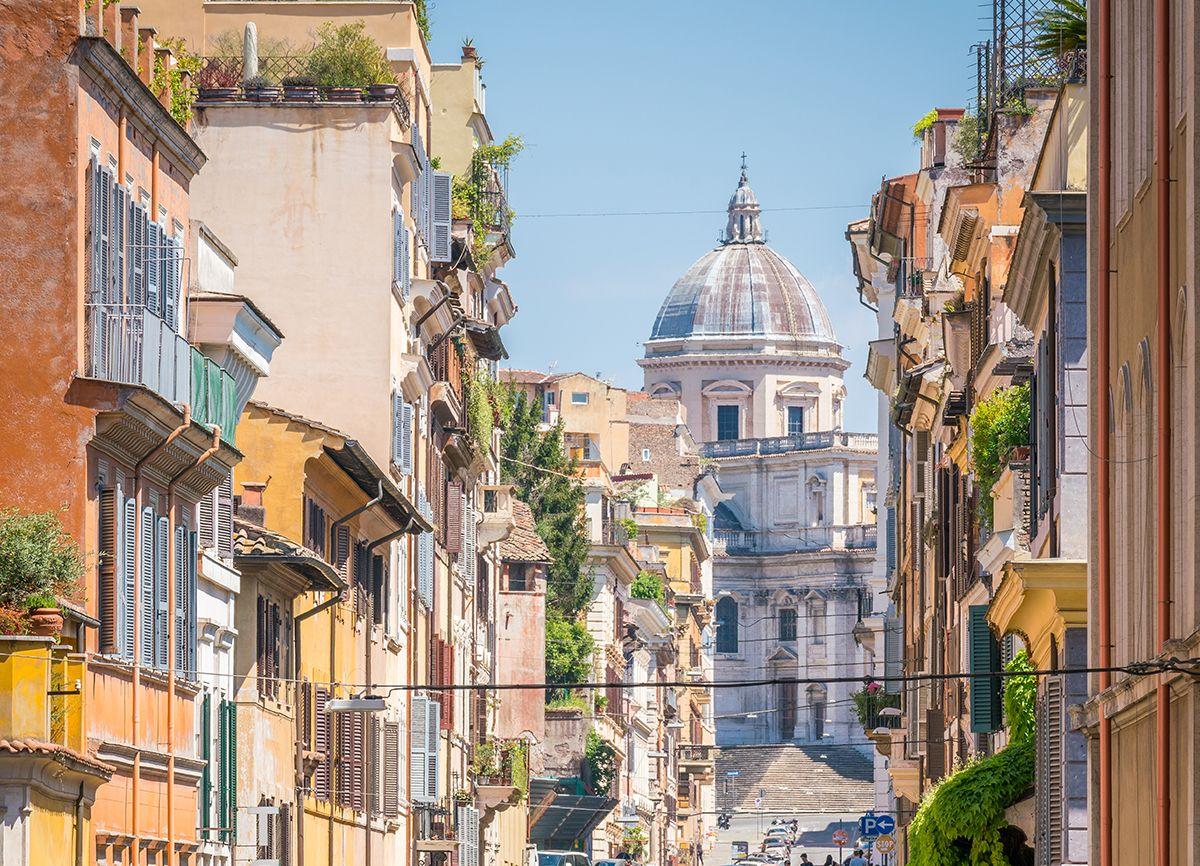Get ready for a rewarding walk in the heart of Rome, through two of its most charming, historic and atmospheric neighbourhoods. We take you to San Giovanni, home to the official cathedral of the Urbe, and to the Rione Monti, a concentration of Romanity in perpetual transformation. You will encounter beauty, wonder and flavour at every turn.
San Giovanni in Laterano: iconic grandeur. Credits Tatyana Vyc / Shutterstock
Often when one comes to Rome one tends to overlook the residential district of San Giovanni, south-east of the centre, and is content to recall the images of the monumental basilica that is its symbol seen so many times on TV for the big 1 May concert. It is a missed opportunity, because the mighty Basilica di San Giovanni in Laterano is not only a superlative work of art, but is also surrounded by other gems worth visiting.
The grandiose interior of St John Lateran. Credits Massimo Salesi / Shutterstock
Basilica of St John Lateran: the Cathedral of Rome
This monumental church, the oldest of the four papal basilicas, is the official cathedral of Rome and the seat of the pope in his capacity as bishop of the city. Dating back to the 4th century, it is revered as the mater et caput (mother and head) of all Catholic churches and has been the most important place of worship in the West for at least a millennium. Surmounted by 15 7 m high statues (Christ with St John the Baptist, St John the Evangelist and the Doctors of the Church), the immense late Baroque façade, the work of Alessandro Galilei (an architect belonging to the same family as Galileo), was completed in 1735. Behind the colossal columns of the portico, the central bronze portal comes from theancient Curia Iulia of the Roman Forum, while the last one on the right is the famous Holy Door, which is only opened in Jubilee years.
The interior is striking for the imprint left by Francesco Borromini, one of the archi-stars of Baroque Rome: built for the Holy Year of 1650, it is a breathtaking spectacle, with its gilded ceiling, 15th-century Cosmatesque floor and wide nave flanked by 18th-century statues of the apostles, almost 5 metres high. The excitement is not over: at the end of the nave, a richly ornamented Gothic tabernacle holds, according to tradition, the relics of the heads of St Peter and St Paul. At the other end of the basilica, on the first pillar of the right aisle, is a fragment of a fresco by Giotto, introducing a further element of historical perspective for visitors.
If after admiring such beauty you feel a little dizzy, stepping out into the open air in Piazza San Giovanni, you will be justified.
Rome, the pure forms of the Basilica of San Clemente. Credits essevu / Shutterstock
The Basilica of San Clemente: an X-ray of Rome's history
The itinerary continues along Via San Giovanni in Laterano towards the Colosseum. Before the Park of the Colle Oppio and the Baths of Trajan, where you will find some coolness on hot days, you will see the Basilica of San Clemente on the right. No other place illustrates the stratification of the different periods of Rome's history better than this fascinating building. Dating back to the 12th century, it was built on top of a 4th-century church, itself built on a 2nd-century temple of Mithras and a 1st-century Roman house, all resting on foundations from the Republican era. Can you imagine a more interesting and varied stratification of historical eras?
Read also:
Subscribe to our newsletter! For you weekly travel tips, special offers, stories from the world and 30% discount on your first order.
The Monti district and the Basilica of Santa Maria Maggiore in the background. Credits essevu / shutterstock
Around the Monti district
The Monti district is considered the oldest in Rome. Here in imperial times stood the Suburra, Rome's plebeian quarter: it has always been a working-class area, known for its brothels, sordid taverns and general atmosphere of squalor. Over the years, the district has undergone a profound transformation and is now home to renowned artisan workshops, while its taverns have become alternative bars. From the very first steps, one breathes in a welcoming, artistic and refined, yet somehow colloquial atmosphere, amidst colours and scents that immediately put one at ease.
Speaking of fragrances... Roman cuisine is great and the Monti district does not disappoint expectations, also because it will be time for something good to eat... To enjoy Roman-style meatballs, and much more, I recommend the wine shop Ai tre scalini - Bottiglieria dal 1895(Via Panisperna 251). A true piece of history in the neighbourhood, this bottiglieria is always full of customers, especially young ones, who flock to the counter and spill out onto the street. It is the perfect place for a meal of cheeses, cold cuts and dishes of the day, such as meatballs with sauce, accompanied by excellent wines and beers. Alternatively, right across the street, BarzilaiBistrot (Via Panisperna, 44) awaits you. Enjoy its informal atmosphere and take a seat at one of the nice tables under the huge chandelier or at the counter.
Rome, glimpses of everyday life on Via Panisperna. Credits Tamara_Kr / Shutterstock
Between Via del Boschetto and Villa Aldobrandini: first shopping, then relaxation
Earlier we mentioned the popular boutiques in the Monti district, and so here is the right reference to encounter them: strolling along Via del Boschetto, one finds numerous of them. Boutiques such as Tina Sondergaard 's (at no. 1) paved the way for the revitalisation of the district, which was later joined by vintage fashion outlets, jewellers and other inviting shops. If you're looking for bijou, for example, try Perlei: the avant-garde jewellery on display in the windows of this handcrafted jewellery store will appeal to those with a minimal, contemporary style.
In high season, the streets of Rione Monti can be quite crowded and shopping, as you know, is demanding: you will find a quiet place to take refuge, right next to Via Nazionale. It is the garden of Villa Aldobrandini, belonging to the 16th century mansion of the same name: scattered with sculptures, it has a few benches under the orange trees, where you can easily catch your breath to... continue shopping.
Michelangelo's Moses at San Pietro in Vincoli. Credits Vlad G / Shutterstock
Basilicas of San Pietro in Vincoli and Santa Prassede: from the profane to the sacred
After succumbing to the earthly pleasures of shopping and dining, return to the sacred (and the beauty of great Roman art) by visiting the Basilica of St Peter in Chains. Pilgrims and lovers of beauty have been coming here in droves since the 5th century for two reasons: to marvel at Michelangelo's colossal Moses (1513-5) and to see the legendary chains (bonds) that imprisoned St Peter in the Mamertine Prison.
Heading towards the Esquiline, two more triumphs of beauty await you. The 9th century church of Santa Prassede is famous for its Byzantine mosaics, which have come down to us in their original form. It is dedicated to the saint who, according to legend, provided shelter to Christians from persecution. More imposing and majestic is the Papal Basilica of Santa Maria Maggiore. One of Rome's four major basilicas, it stands on the Esquiline Hill, on the spot where it is said that snow miraculously fell in the summer of 358 AD (the event is re-enacted on 5 August each year with a light show in Piazza di Santa Maria Maggiore).
At this point, stay in Monti for the evening. For dinner, try La Barrique, one of the best places to eat in the district. An elegant but informal wine bar, it is ideal for a leisurely meal. Make a reservation, it is always best here in Rome, and end your day in the Eternal City with dignity.






